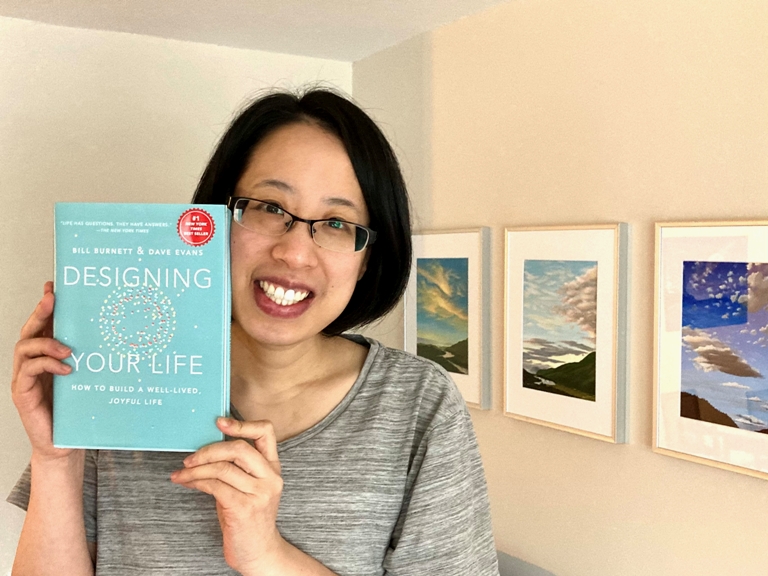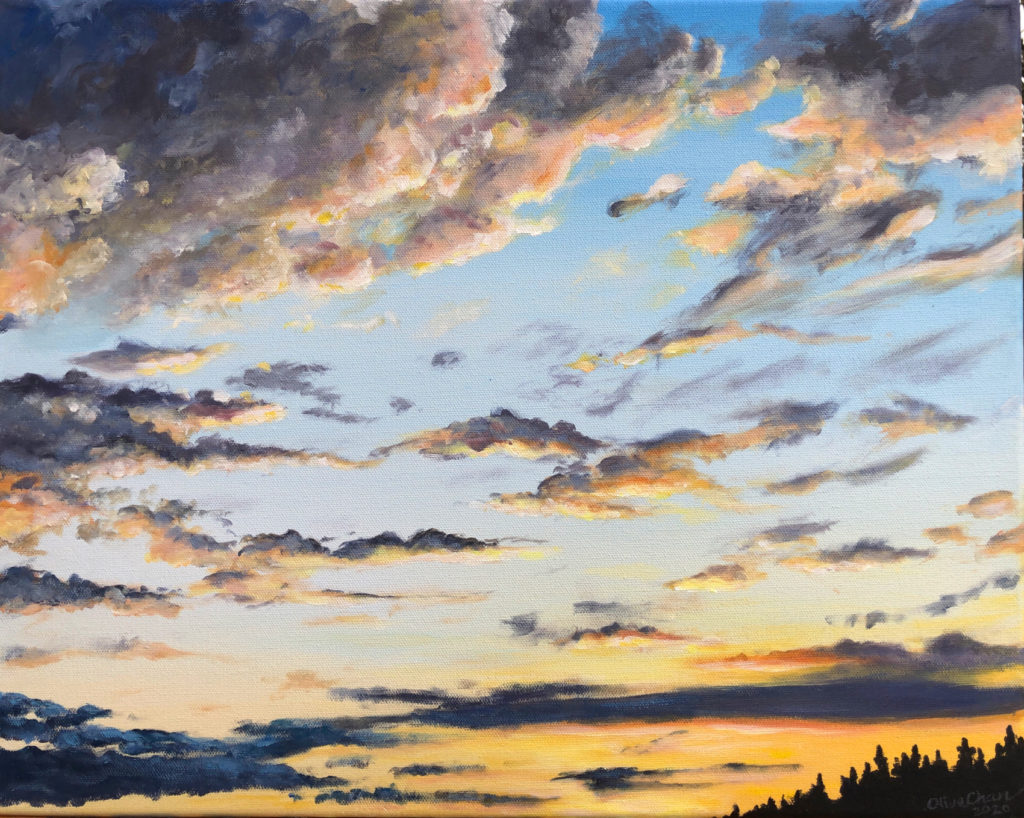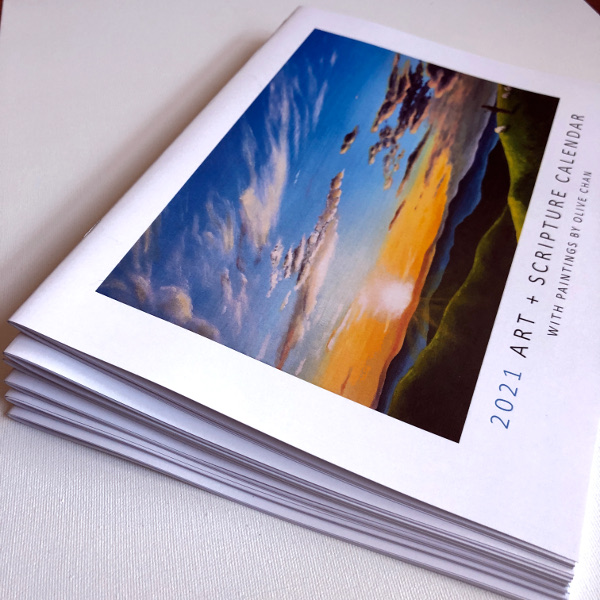The first book that I read in 2020 ended up changing my life. Sounds dramatic? Let me explain and I’ll let you decide. In January, I picked up Designing Your Life: How to Build a Well-Lived, Joyful Life (affiliate link) by Bill Burnett and Dave Evans. It was a book Tim had asked for last Christmas but its pretty teal cover called to me and I stole it before he had the chance to crack it open. Little did I know what would come as a result.

Written by two Stanford University Design professors, Designing Your Life is based on their highly popular course by the same name. In the book, they explain a designer’s approach to life: one that stays curious, has a bias to action, reframes problems to get unstuck, and collaborates with others. Filled with practical exercises to get you not only dreaming, but brainstorming actual steps to take toward your dreams, this was the book I needed to read.
At the start of 2020, I was wondering which direction to move toward in terms of my own “career.” I was still working part-time with Tim at Coracle Marketing (our home-based marketing company) but with both kids in school, I had about 4 hours a week to invest into something else. As I read Designing Your Life, I came across one exercise they called “Odyssey Planning,” in which you were asked to “create three alternative versions of the next five years of your life.” This got me thinking.
My first alternative was to continue what I was doing with Coracle Marketing. My focus there was mostly building websites and writing/editing copy. This was steady work, but it didn’t really fill my needs for creativity and meaning. Also, Tim and I had been talking about finding ways to shift the business so it wouldn’t rely so much on us, particularly since his Ankylosing Spondylitis (a chronic auto-immune condition) was progressively posing more physical challenges with each year.
A second alternative was to enroll in school to become trained as a Spiritual Director. I had wanted to do this for many years already. Spiritual Direction is the art of providing spiritual companionship to people and helping to “direct” their attention to where God is present in their every day lives. I had had conversations of this nature with friends for a while already and I knew it would be deeply fulfilling work. However, SoulStream, the school which offered the program I was wanting to apply for wasn’t taking a new cohort until 2022. Also, pursuing this route wouldn’t really help us financially.
The third option I envisioned was to try out being an artist. This would not only allow me to use my artistic gifts, but also potentially earn us some income. Prior to this exercise, I had already felt convicted about needing to “own” the artist part of me – to accept it as part of who I am, as well as to do something with it. When my dad passed away in 2019, it made me think deeply about how I wanted to spend my life. It also reminded me that our days are not guaranteed to us, so if there were things I wanted to do, I best not put them off. Among the three possible futures, I felt drawn to this one the most.
Having a clearer sense of direction was helpful, but what was even more helpful was the idea of prototyping, which the authors presented as small ways you can move toward your dream. The concept of taking little steps and trying things out took the pressure off of actually needing to achieve anything. I could start with painting one day a week and see where it went. If it was a flop, then at least I tried it. (That’s the designer’s bias to action in play.) I would treat it as one grand experiment and see where it would take me. That’s what life is anyway, right?
After talking with Tim, that’s what we decided to do. Every Wednesday would be my painting day. Usually, by the time I had packed the kids’ lunches, ate breakfast, gotten myself ready for the day and tossed in our first load of laundry, it was 10am when I could set up my painting corner in our bedroom. I then had 1.5 hours to paint before making lunch for Tim and myself. Then I’d get in another 2 or so hours before packing up my “studio” and heading out to pick up the kids from school.
Another decision I made was that I would focus on painting skies for the year so that I could have a cohesive body of work to show. Skies had always been my favourite and most rewarding part of past paintings so it made the most sense to focus on them.

To my surprise, even with this small amount of time, I was able to complete a painting by the end of January. To my greater surprise, after sharing a photo of that painting, I received a series of commissions from my father-in-law (who is my most supportive patron by far). In March, I sold my first collector’s painting. And by May, I was working on several other commissions, with more lined up.
I decided to create an Instagram account early in the year since I had heard it was a good platform for artists and I was floored by the amount of talent online. I was able to learn from many artists more seasoned than myself, as well as connect with others in a similar beginning stage like me. When the lockdowns happened, I realized that I still had a way to interact with artists locally and around the world and I was inspired to see how art played a role in helping people cope with the pandemic.
With each painting I created and shared, I would receive a few more commission inquiries. I began to see how all the connections Tim and I had made and maintained over the years was helping my art side hustle gain traction. Many of my friends commented on how happy they were to see that I was finally selling my artwork. I often felt incredulous that people were cheering for my success.

By October, I had enough pieces to put together an art calendar. For the previous two years, I had made a small batch of calendars for family and close friends. This year, Tim suggested we do a Kickstarter campaign to see if more people might be interested in buying my calendars. Having run a Kickstarter campaign for clients before, we had a good idea of how it worked. At the end of our two week campaign, we had reached 907% of our original $500 goal. There was definitely interest! And by the end of the year, we’d sold over 500 copies of the 2021 Art + Scripture Calendars with calendars going out to people across Canada, US, UK, Germany, Hong Kong, Singapore, and China.
This is how things snowballed. The calendar project then motivated me to create a website. The marketer in me couldn’t just send out 500 calendars (essentially, large business cards) without a way for people to find me online! So I gathered up all the web development know-how and design sense I’d collected over the past 7 years and put together my website, giving my business an actual name: Olive Chan Art.
On January 1, 2021, Tim and I took a day to review the past year and dream about the coming one. When we sat down to look at the numbers for my little side gig, we realized it wasn’t so little. To my surprise, I had grossed $20K in my first year. This was indeed the path for me.
This year, I’m building on last year. I’m going to register my business and make it official. I’ll still be working with Coracle Marketing for a day a week, but I’ll be shifting an additional afternoon a week to Olive Chan Art. I have lots of ideas I want to try, including writing blog posts that explain the back stories of each of the paintings in my Art + Scripture Calendar, and a series of smaller works that will hopefully be ready in time for Mother’s Day gifts (if you want to be notified by email when the stories or paintings are released, sign up here).
At the start of 2020, I thought I’d try art out. By the end of the year, I had the makings of an actual business. By reminding myself to stay focused on creating, the rest of the opportunities naturally opened up. However, if I hadn’t read Designing Your Life, I wouldn’t have had the courage to take that first step.
I’ve written about my experience here because I know there are many people who have dreams for what they want to do with their lives but aren’t sure how to get there. People who feel stuck in their jobs. Or people like me who have paused their careers to care for young children and are now trying to figure out what’s next. Start small. But start. And if you’re looking for practical direction, consider reading Designing Your Life. It just might change your life too.